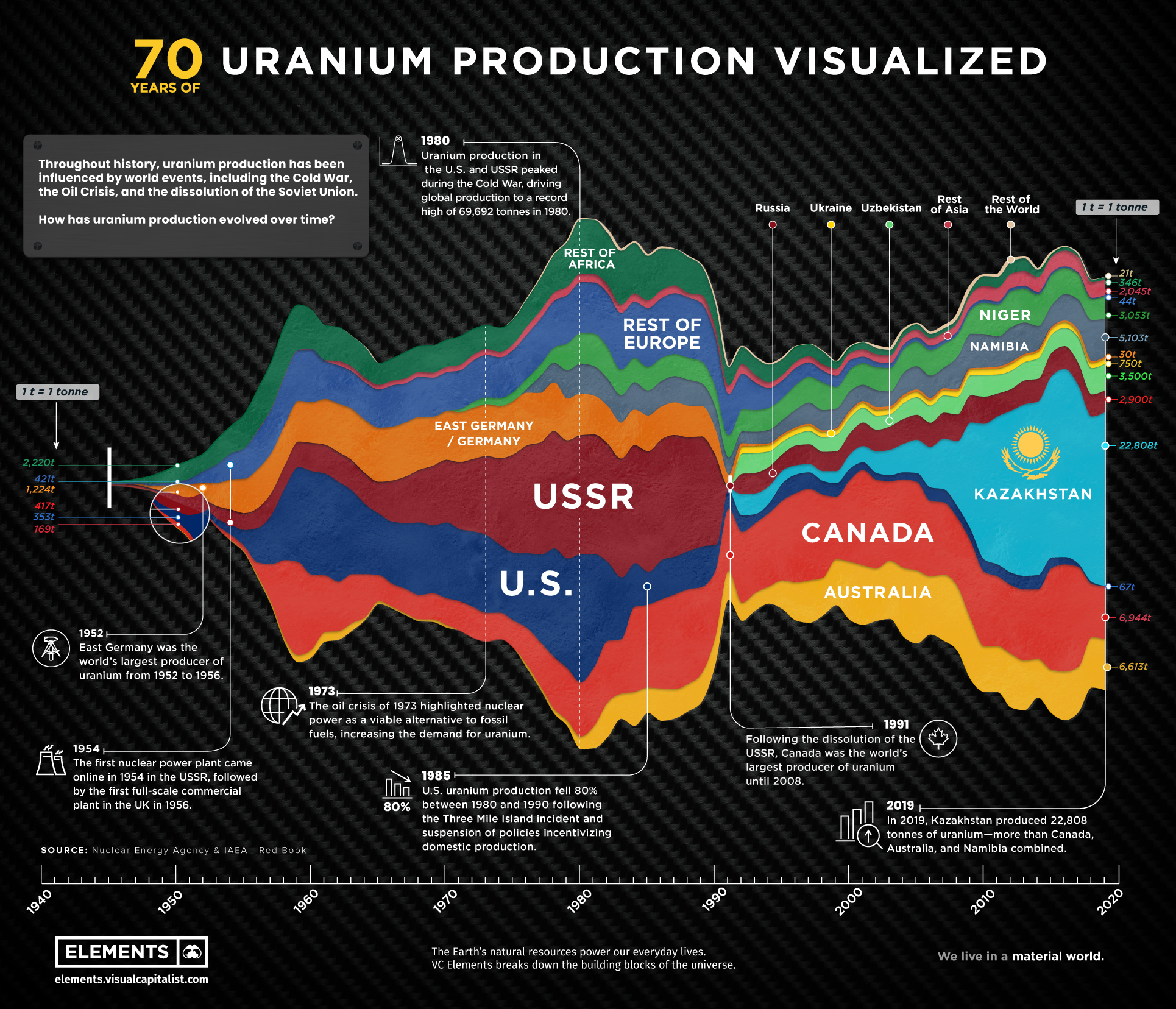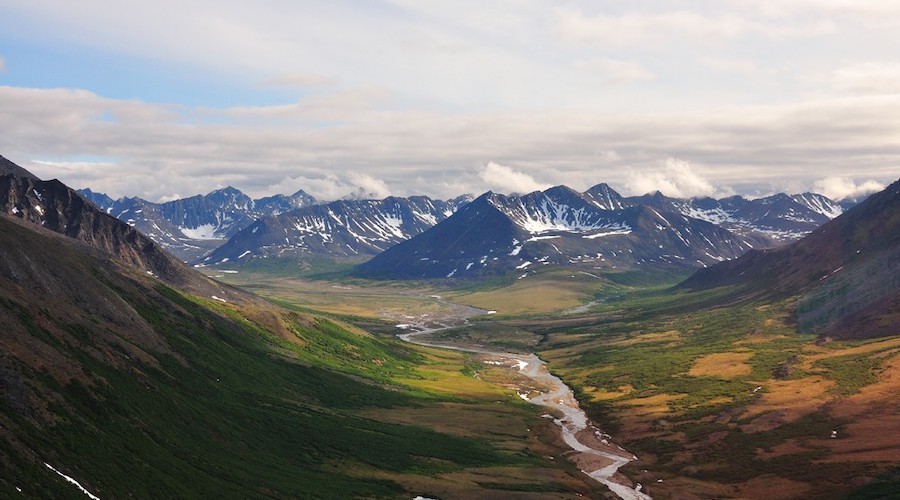70 years of global uranium production by country

70 Years of Global Uranium Production by Country
Uranium was discovered just over 200 years ago in 1789, and today, it’s among the world’s most important energy minerals.
Throughout history, several events have left their imprints on global uranium production, from the invention of nuclear energy to the stockpiling of weapons during the Cold War.
The above infographic visualizes over 70 years of uranium production by country using data from the Nuclear Energy Agency.
The Pre-nuclear Power Era
The first commercial nuclear power plant came online in 1956. Before that, uranium production was mainly dedicated to satisfying military requirements.
In the 1940s, most of the world’s uranium came from the Shinkolobwe Mine in the Belgian Congo. During this time, Shinkolobwe and Canada’s Eldorado Mine also supplied uranium for the Manhattan Project and the world’s first atomic bomb.
Related Article: Uranium price rally is a high-stakes bet on future of nuclear power
However, the end of World War II marked the beginning of two events that changed the uranium industry—the Cold War and the advent of nuclear energy.
Peak Uranium
Between 1960 and 1980, global uranium production increased by 53% to reach an all-time high of 69,692 tonnes. Here’s a breakdown of the top uranium producers in 1980:

Several factors drove this rise in production, including the heat of the Cold War and the rising demand for nuclear power. For example, the U.S. had 5,543 nuclear warheads in 1957. 10 years later, it had over 31,000, and the USSR eventually surpassed this with a peak stockpile of around 40,000 warheads by 1986.
Additionally, the increasing number of reactors worldwide also propelled uranium production to new highs. In 1960, 15 reactors were operating globally. By 1980, this number increased to 245. What’s more, after the Oil Crisis in 1973, nuclear power emerged as a viable alternative to fossil fuels, and the price of uranium tripled between 1973 and 1975. Although the increase in uranium production was less dramatic, high prices made mining more profitable.
However, several nuclear accidents in the world such as the Three Mile Island reactor meltdown in the U.S. in 1979 and the Chernobyl disaster in Ukraine in 1987 brought a stop to the rapid growth of nuclear power. Furthermore, following the end of the Cold War, military stockpiles of uranium were used as “secondary supply”, reducing the need for mine production to some extent. As a result, uranium production declined sharply after 1987.
The Current State of Uranium Mining
Uranium producers have changed considerably over time. Since the economic viability of uranium deposits often depends on the market price, many countries have dropped out due to lower uranium prices, while others have entered the mix.
Here are the top 10 uranium-producing countries based on 2019 production:

Kazakhstan has been the world’s leading uranium producer since 2009. In 2019, Kazakhstan mined more uranium than Canada, Australia, and Namibia combined, making up 42% of global production. It’s also worth noting that Kazakhstan, Uzbekistan, Russia, and Ukraine—four countries that were formerly part of the USSR—made it into the top 10 list.
Canada was the world’s second-largest producer of uranium despite production cuts at the country’s biggest uranium mines. Australia ranked third with just three uranium-producing mines including Olympic Dam, the world’s largest known uranium deposit.
Overall, the top 10 countries accounted for 99% of global uranium production, and the majority of this came from the top three. However, global production has been on a downward trend since 2016, with a slight bump in 2019.
The Future of Uranium Production: Up or Down?
The uranium market is at an inflection point, with tightening supply and rising demand.
As of 2020, mine production covered only 74% of world reactor requirements, and analysts expect the market deficit to continue through 2022. Although secondary sources have historically filled the gap between demand and supply, recent developments in the uranium market have driven prices to six-year highs, which could also affect uranium production.
In addition, the shift towards clean energy could provide a boost to uranium demand, especially because of the advantages of nuclear power. With countries like China embracing nuclear energy and others planning for complete phase-outs, nuclear’s evolving role in the global energy mix will likely shape the future of uranium production.
(This article first appeared in the Visual Capitalist Elements)
More News
Miner’s bid to tap seabed pits UN-backed regulators against Trump
International regulators condemned TMC’s move to circumvent their authority by seeking the Trump administration’s approval for seabed mining.
March 29, 2025 | 02:38 pm
The stars are aligning for Graphite One
Graphite One could take a leading role in loosening China’s tight grip on the US graphite market by mining feedstock from its Graphite Creek project in Alaska.
March 28, 2025 | 03:29 pm
{{ commodity.name }}
{{ post.title }}
{{ post.excerpt }}
{{ post.date }}



Comments